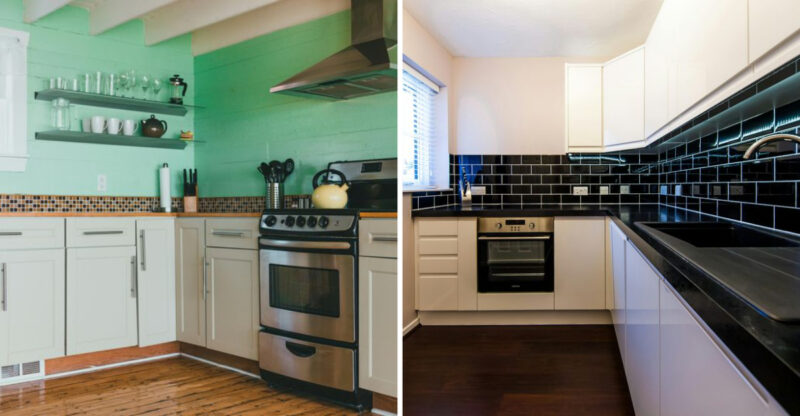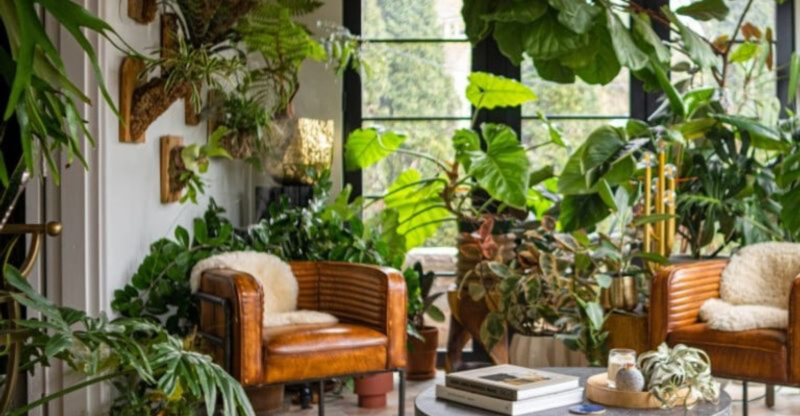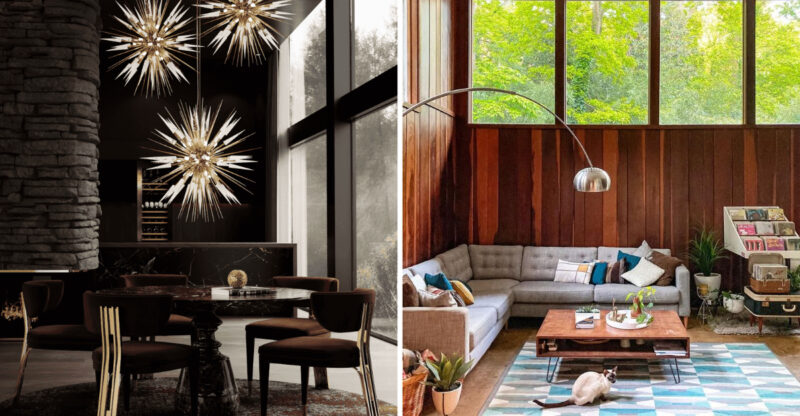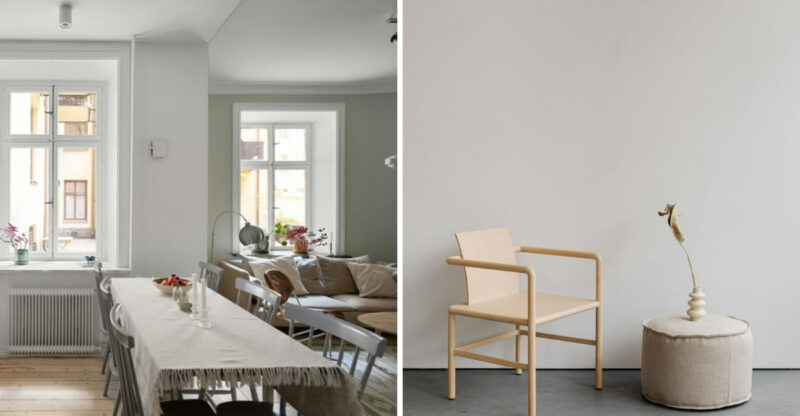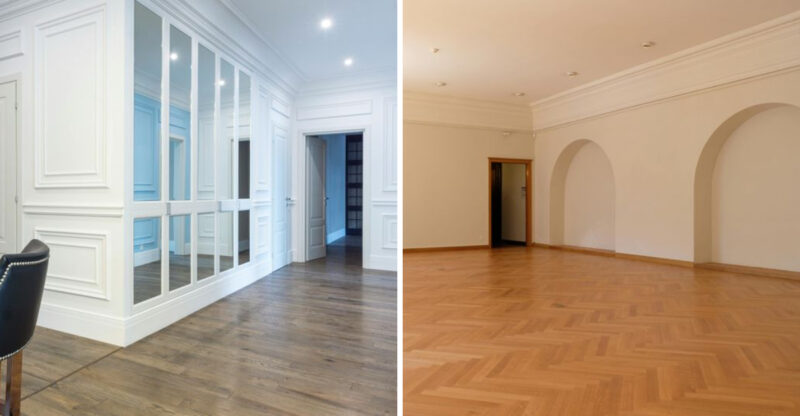16 Nostalgic Kitchen Ideas Designers Wish Would Make A Comeback Soon (Plus 6 Special Ones)
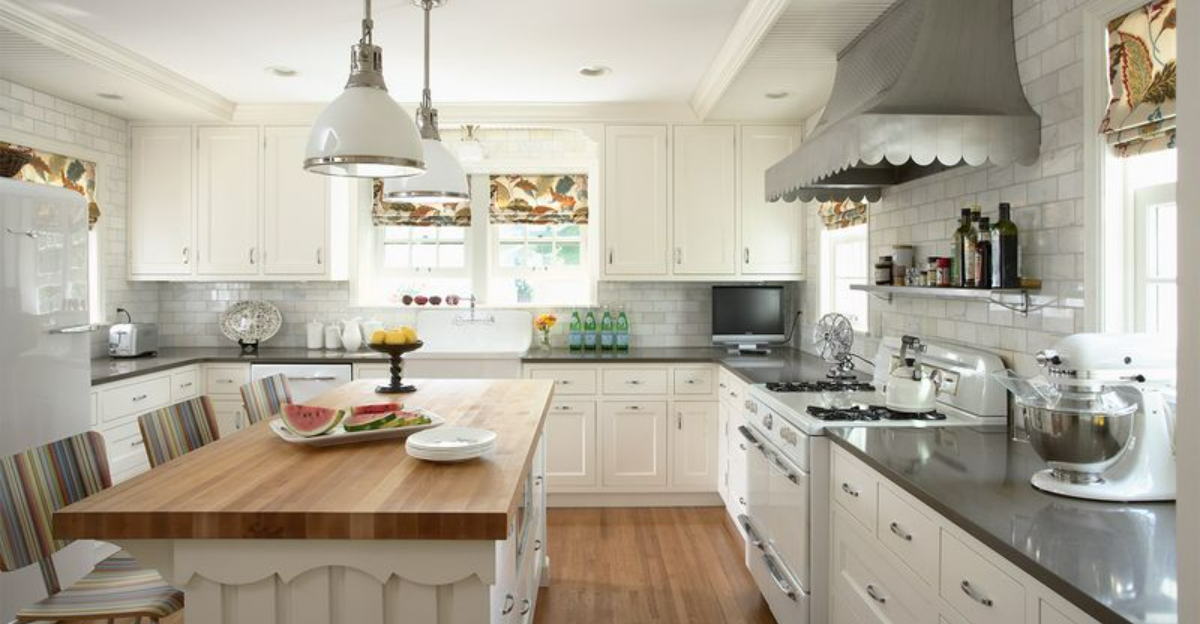
Remember those charming kitchens from grandma’s house? Many of today’s sleek, modern designs lack the warmth and character of kitchens past. Interior designers are now craving a revival of nostalgic elements that brought personality and coziness to the heart of the home.
Let’s explore these beloved retro features that experts believe deserve a second chance in contemporary kitchens.
1. Colorful Appliances
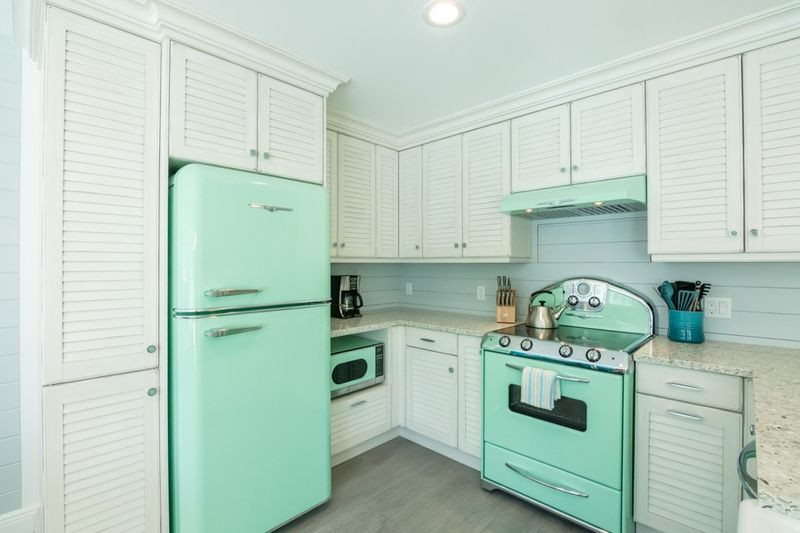
Those mint green fridges and candy-apple red stoves weren’t just appliances—they were personality statements! Modern kitchens tend to play it safe with stainless steel and white, but designers are yearning for the return of bold color choices.
Vintage-inspired brands are slowly bringing these cheerful options back. A colorful refrigerator or range can instantly become the focal point of your kitchen, adding character without a complete renovation.
2. Breakfast Nooks
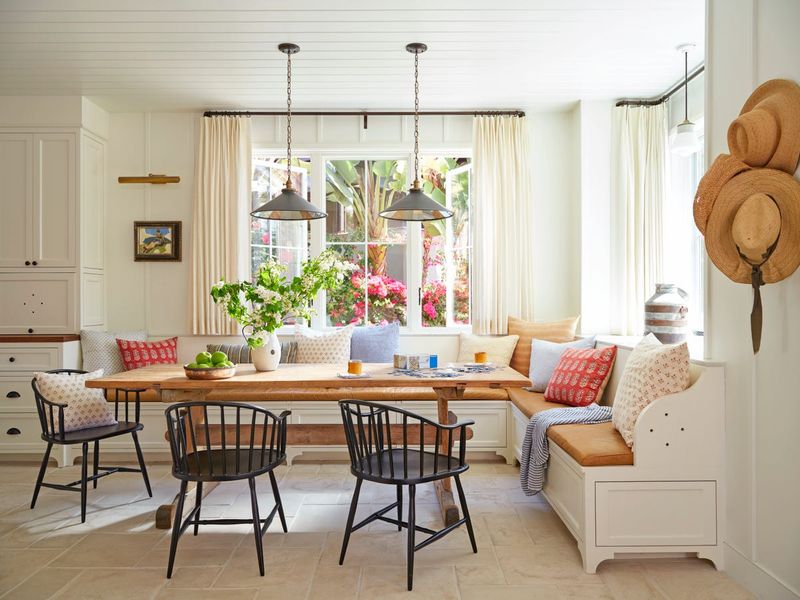
Nothing says ‘home’ quite like a cozy breakfast nook tucked into a kitchen corner. These intimate dining spaces were perfect for morning coffee, homework sessions, or casual family meals without the formality of the dining room.
The built-in bench seating maximized space while creating an inviting spot for conversation. Many designers believe these charming corners foster more meaningful family time than island seating, where everyone faces the same direction.
3. Linoleum Flooring
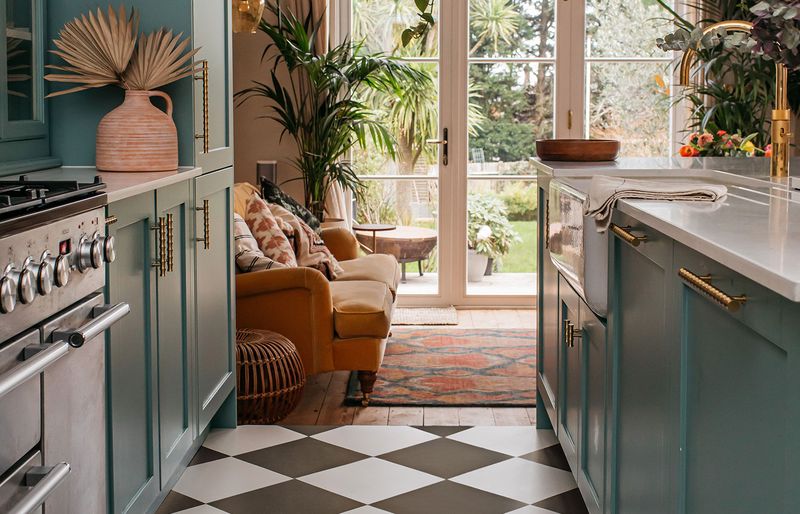
Before you wrinkle your nose, today’s linoleum is nothing like the peeling sheets in great-aunt Edna’s kitchen! This eco-friendly material made from linseed oil is experiencing a design renaissance for good reason.
Durable, soft underfoot, and available in countless patterns, modern linoleum offers comfort and style. Designers appreciate its warmth compared to cold tile and its natural antimicrobial properties. Plus, those checkerboard patterns and fun geometric designs add instant vintage charm.
4. Hutch Cabinets
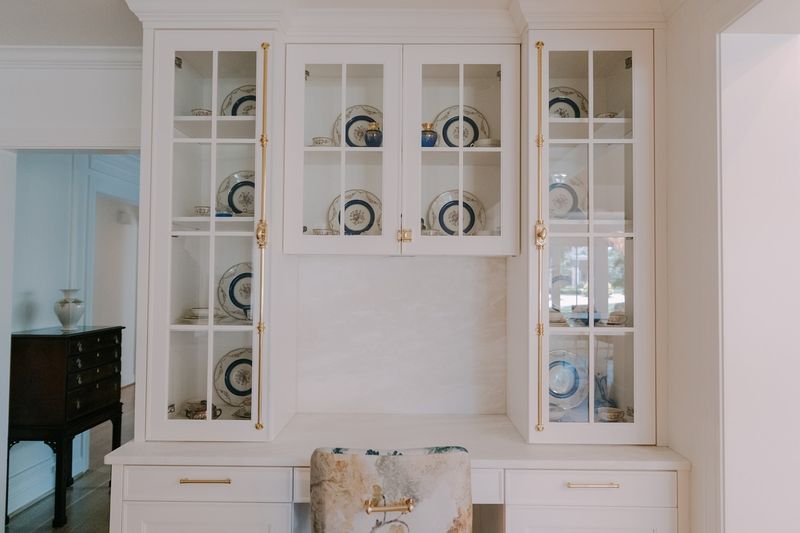
Long before open shelving became trendy, hutch cabinets proudly displayed family heirlooms and pretty dishes. These freestanding furniture pieces added architectural interest while providing both closed storage and display space.
Unlike built-ins that blend into walls, hutches create a collected-over-time feel that instantly warms up a kitchen. Designers love how they break up the monotony of continuous cabinetry and bring a touch of living room comfort into cooking spaces.
5. Wallpaper Accents
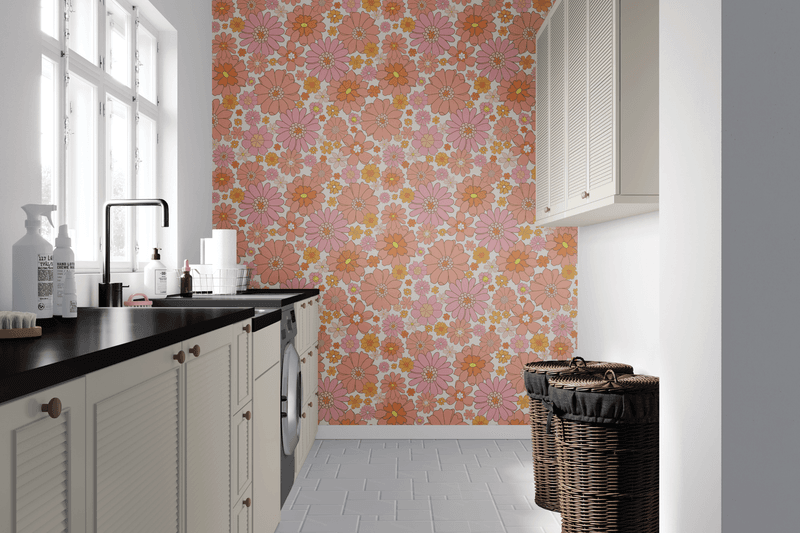
Kitchen wallpaper got a bad rap after decades of tomato-themed borders and busy patterns that didn’t age well. But designers are championing its comeback in the form of bold statement walls and subtle accents.
Modern, washable wallpapers can withstand kitchen conditions while adding personality impossible to achieve with plain paint. From botanical prints to geometric patterns, these vertical design elements draw the eye up and make smaller kitchens feel more spacious.
6. Pastel Color Schemes
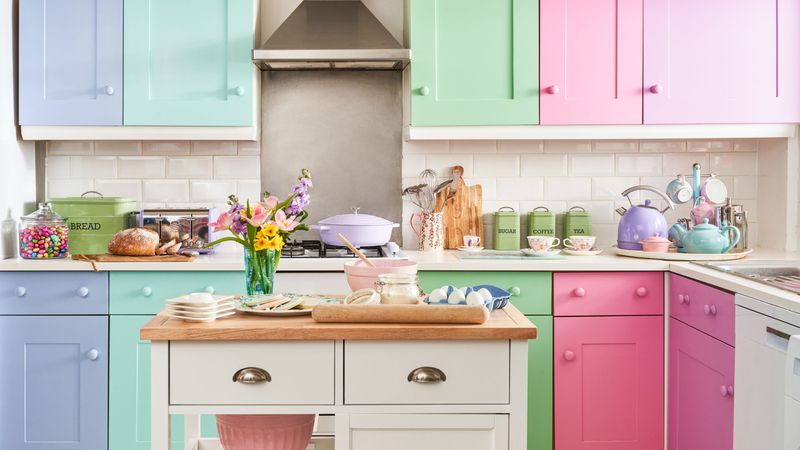
The jadeite green and soft pink kitchens of the 1950s created cheerful cooking environments that today’s all-white trends simply can’t match. These gentle hues made kitchens feel welcoming rather than clinical.
Designers are rediscovering how these soft colors can brighten a space without overwhelming it. Modern versions pair pastel cabinets with natural wood elements for balance. Even small doses – like a mint green backsplash or blush pink island—can transform a kitchen’s mood.
7. Wooden Countertops
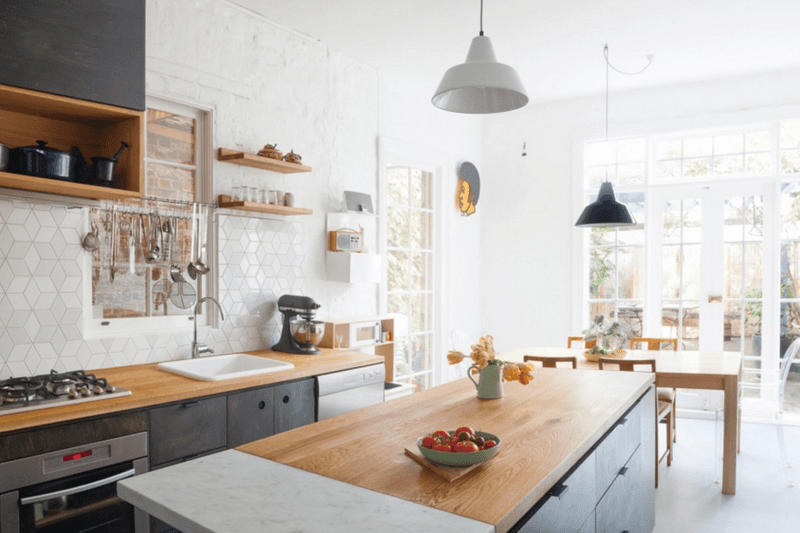
Before marble and quartz dominated kitchen design, wooden countertops brought natural warmth to cooking spaces. The rich patina developed over years of use told a family’s story through every knife mark and coffee ring.
Today’s food-safe sealants make wood counters more practical than ever. Designers appreciate how they soften the hard edges of modern kitchens and age gracefully unlike manufactured materials. Butcher block islands paired with stone perimeter counters offer the perfect balance of function and charm.
8. Glass-Front Cabinets
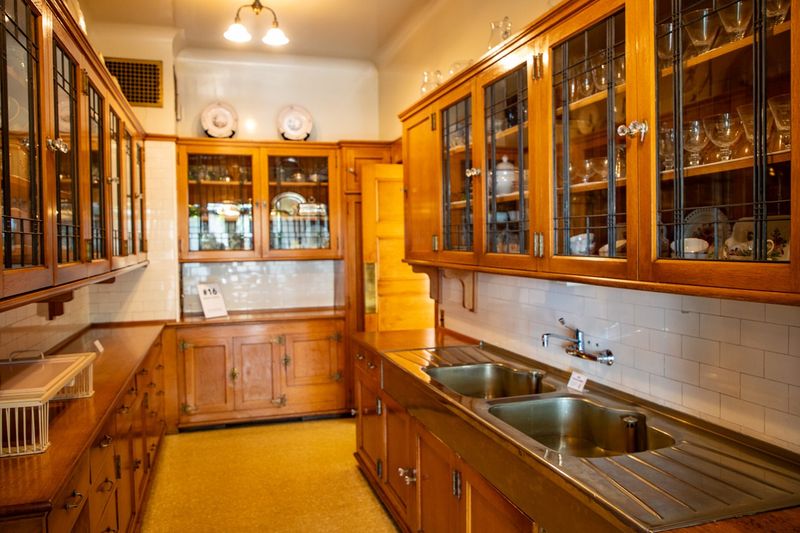
Remember kitchens where pretty dishes peeked through glass cabinet doors? This charming feature added depth and interest to kitchen walls while encouraging homeowners to keep things tidy.
Unlike today’s trend of completely open shelving, glass-front cabinets keep dust at bay while still showcasing special pieces. Designers love how they break up solid walls of cabinetry and reflect light in smaller spaces. They’re perfect for displaying colorful vintage glassware collections or family heirloom china.
9. Built-In Ironing Boards
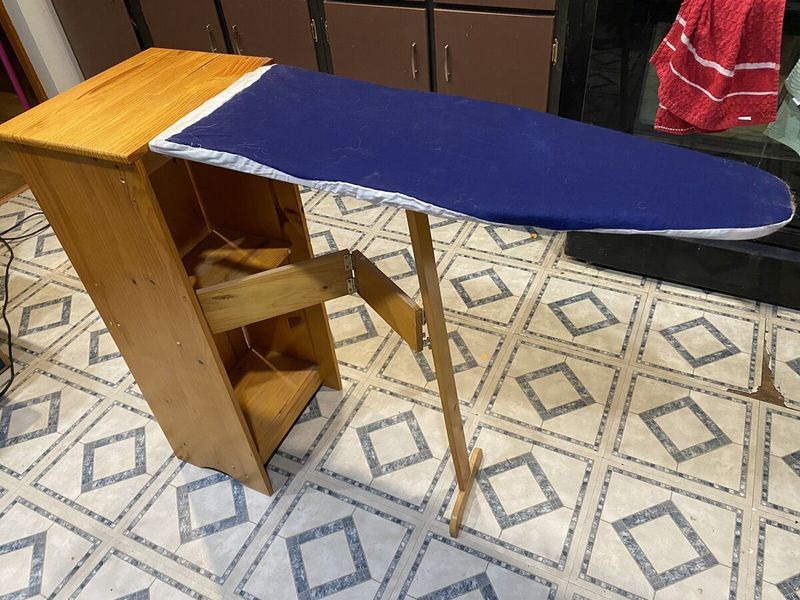
Clever space-saving solutions weren’t invented by tiny house designers! Our grandparents’ kitchens often featured built-in ironing boards that folded neatly into wall cabinets when not in use.
This practical feature meant no lugging heavy boards from closets or setting up in the living room. Modern versions can be integrated into kitchen islands or slim cabinets. Designers appreciate how these hidden helpers maximize function without sacrificing style in hardworking kitchen spaces.
10. Scalloped Trim
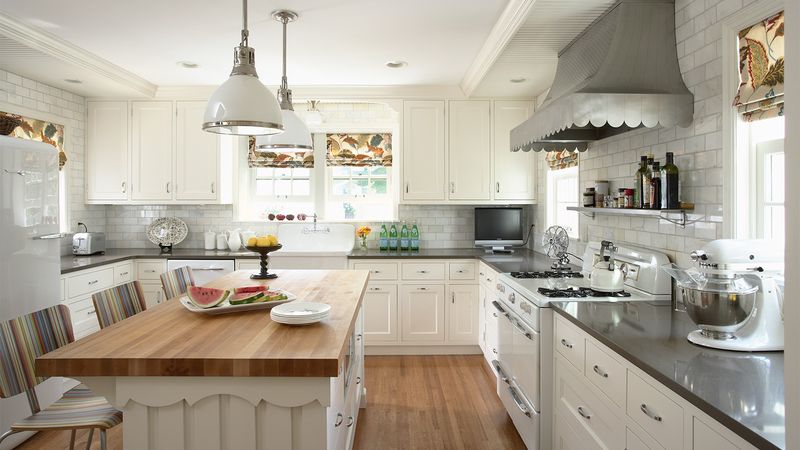
Those sweet scalloped edges that adorned shelves, range hoods, and cabinet skirts added undeniable charm to kitchens of yesteryear. This simple decorative detail softened hard edges and brought a handcrafted feel to utilitarian spaces.
Modern interpretations use cleaner lines while maintaining the whimsical spirit. Designers are incorporating scalloped tile backsplashes, subtle edge details on islands, and gentle curves on open shelving. These playful elements counterbalance the severity of contemporary minimalism with just the right touch of nostalgia.
11. Pull-Out Breadboards
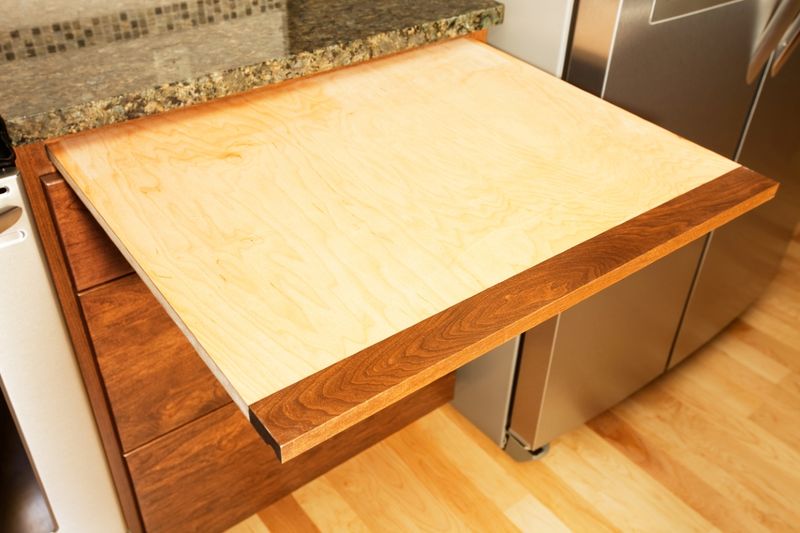
Before expansive islands, kitchens maximized workspace with clever pull-out breadboards tucked beneath countertops. These hardworking surfaces provided extra room for rolling dough or prepping ingredients without permanently sacrificing floor space.
The genius simplicity of this feature is making designers take notice again. Modern versions can incorporate cutting boards, pastry marble, or additional work surfaces that disappear when not needed. In today’s smaller urban kitchens, these space-saving solutions are more relevant than ever.
12. Metal Cabinets
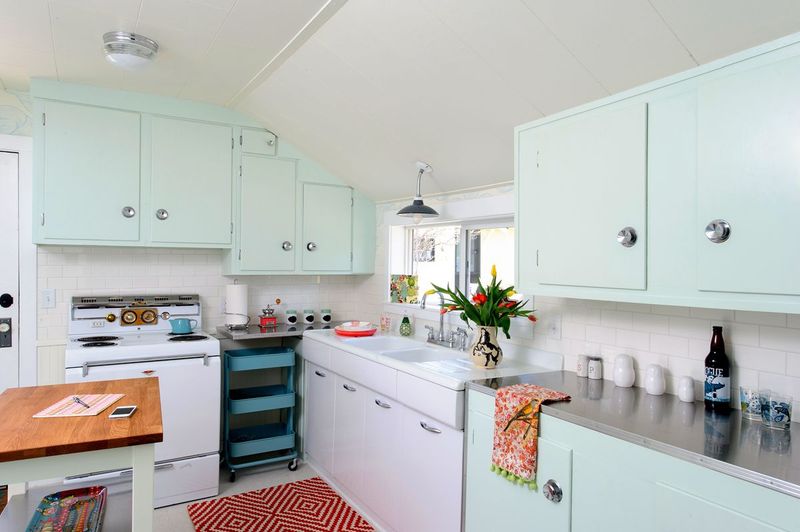
The gleaming metal cabinets that dominated mid-century kitchens combined durability with sleek style. Homemakers loved how easily they wiped clean, while their rounded corners and shiny handles epitomized modern design of the era.
Contemporary designers appreciate these cabinets for their sustainability and longevity. Unlike particleboard options that deteriorate over time, vintage metal cabinets can be refurbished again and again. They bring industrial character to modern spaces while nodding to kitchen history with their distinctive look.
13. Farmhouse Sinks
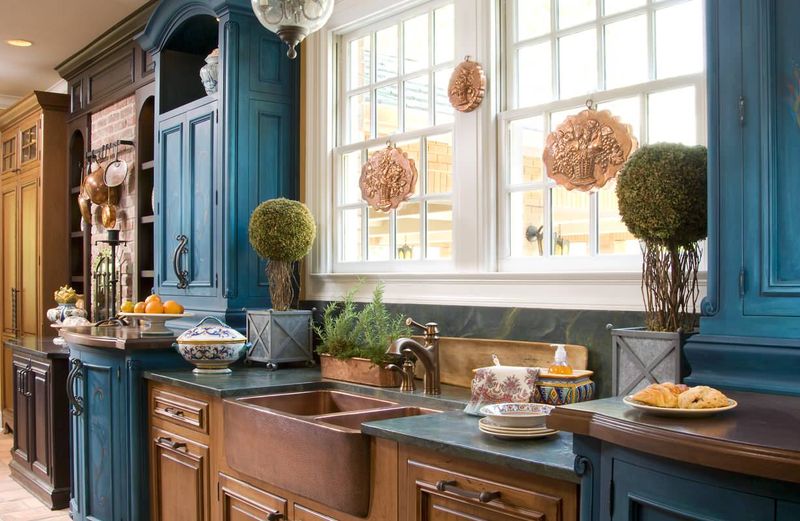
While farmhouse sinks have made a partial comeback, designers want to see more authentic versions rather than just the white fireclay varieties dominating current trends. Original farmhouse sinks were deep, practical workhorses made of soapstone, copper, or cast iron.
The generous single basin allowed for washing large pots and pans with ease. Designers appreciate their blend of form and function, along with the character that develops as materials like copper and soapstone age. These sinks create a natural focal point that grounds a kitchen in history.
14. Cookbook Nooks
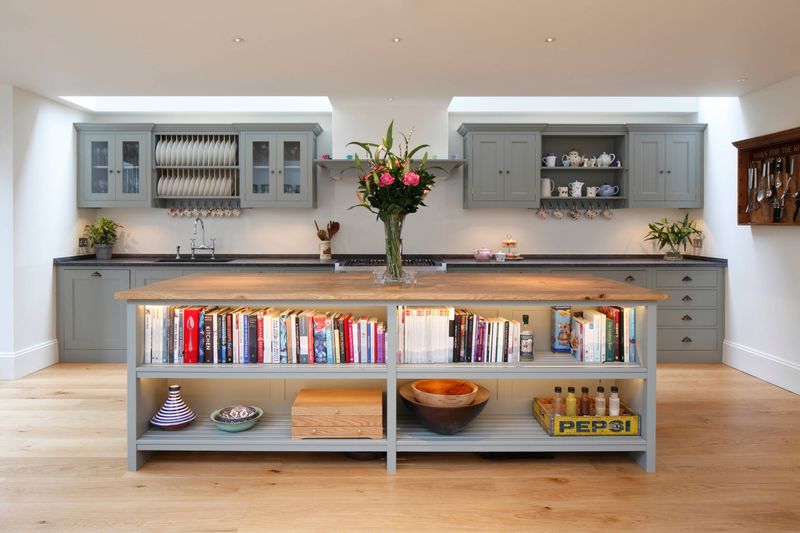
Before Pinterest and cooking apps, kitchens featured dedicated spaces for beloved cookbook collections. These thoughtful nooks kept favorite recipes at hand while acknowledging cooking as both science and heritage.
Designers are advocating for the return of these purposeful spaces that celebrate the joy of physical cookbooks. Even in digital-heavy households, a small shelf near the cooking zone for family recipe books creates a meaningful connection to culinary traditions. The colorful spines add personality while keeping inspiration within reach.
15. Retro Lighting Fixtures
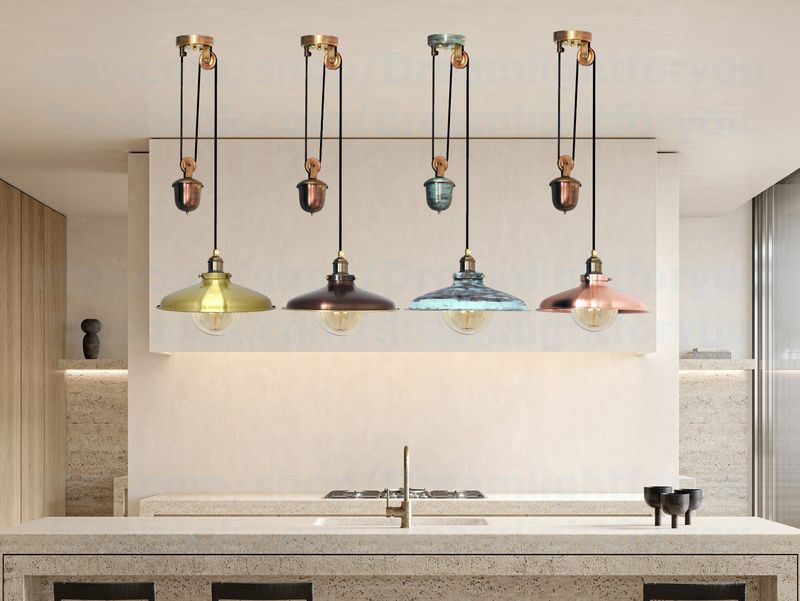
The schoolhouse pendants and colorful pull-down lights of vintage kitchens combined personality with proper task lighting. Unlike today’s recessed cans that disappear into ceilings, these fixtures were meant to be seen and admired.
Statement lighting is making a comeback, but designers specifically want the return of those charming retro shapes. Reproduction fixtures with modern wiring offer the best of both worlds. A classic schoolhouse pendant or atomic-inspired chandelier instantly adds character while creating pools of welcoming light over work and gathering areas.
16. Corner Sinks
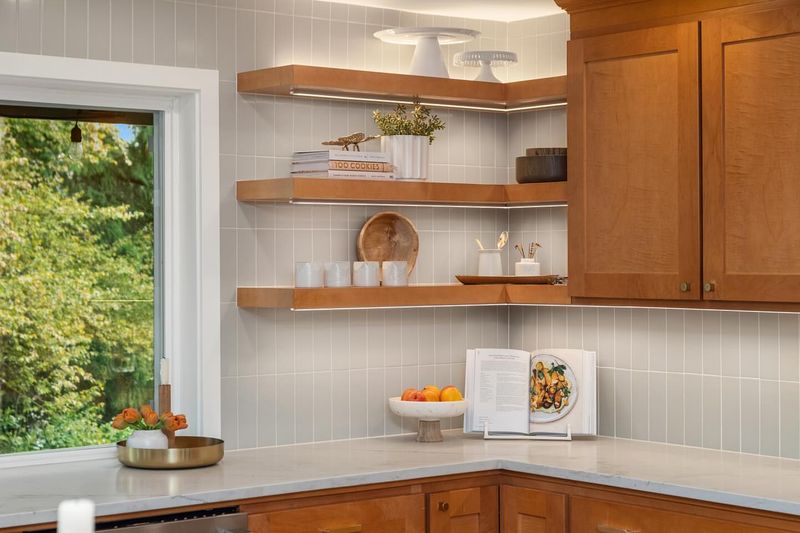
Corner sinks were once a clever solution for maximizing counter space in compact kitchens. Positioned at an angle, they opened up precious work areas while still providing full functionality.
Today’s designers see them as an underutilized option for awkward kitchen layouts. Modern corner sink designs can incorporate cutting boards and accessories that slide over the basin when not in use. For smaller kitchens or unique floor plans, this space-saving feature deserves a second look.
17. Plate Racks
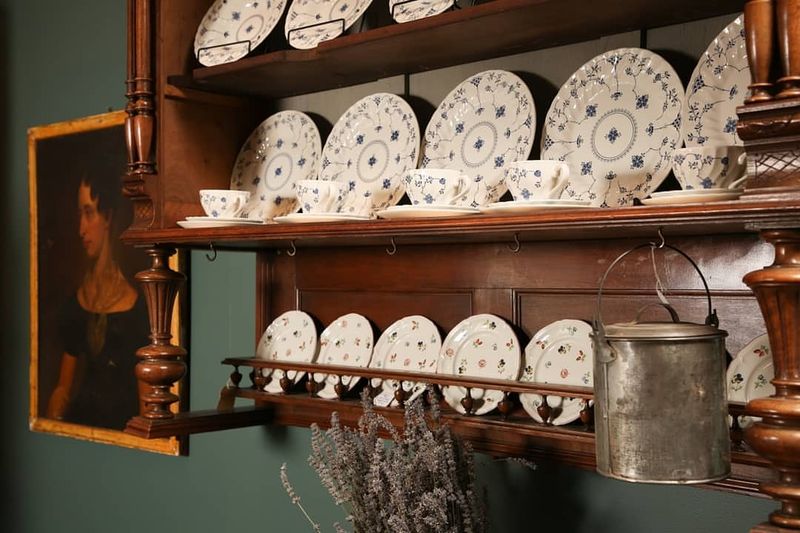
Built-in plate racks displayed everyday dishes while allowing them to air dry efficiently after washing. This practical feature eliminated the need for countertop dish racks while turning necessities into decor.
Designers appreciate how these racks encourage the use of pretty dishes rather than hiding them behind solid cabinet doors. Modern versions can be integrated into islands or above sinks. They’re especially perfect for showcasing colorful vintage plates or handmade pottery that deserves to be seen rather than stacked in a cupboard.
18. Pantry Screen Doors
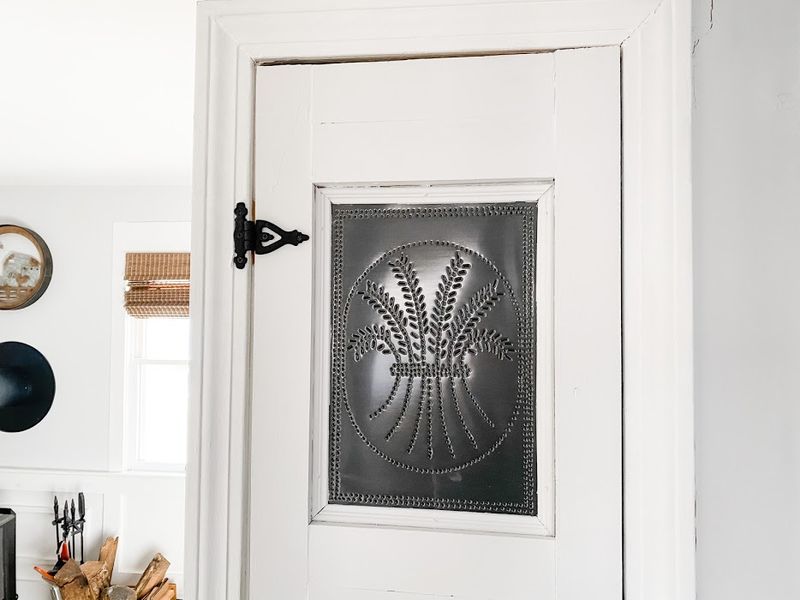
Remember those charming screen doors that led to kitchen pantries? The wooden frames with punched tin or mesh inserts allowed for airflow while keeping the space partially visible.
These practical doors prevented food from spoiling in the days before air conditioning while adding architectural interest. Modern designers love how they bring texture and vintage character to kitchens. Today’s versions can incorporate decorative metal patterns or frosted glass for a fresh take on this nostalgic feature.
19. Hoosier Cabinets
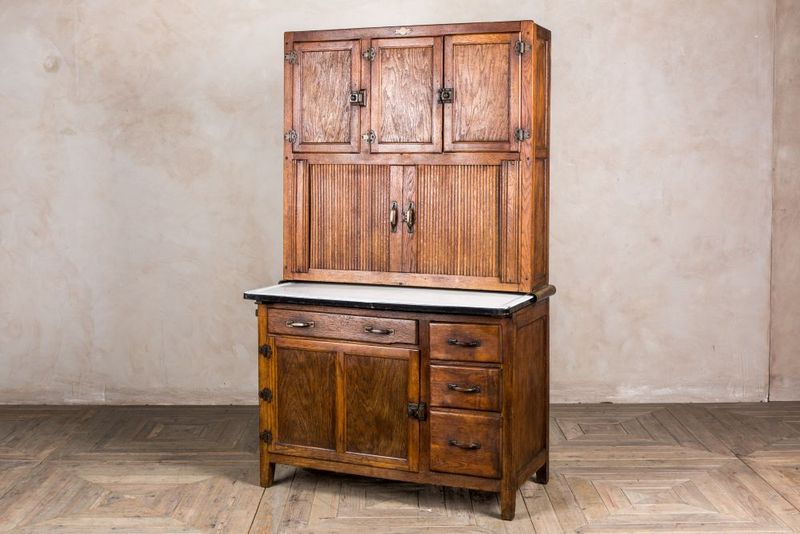
Before built-in cabinetry became standard, Hoosier cabinets served as complete kitchen workstations. These freestanding units featured flour sifters, spice racks, pull-out work surfaces, and storage all in one handsome piece of furniture.
Designers are championing these multifunctional pieces for modern kitchens lacking character. Original Hoosiers make stunning islands or coffee stations, while reproductions offer vintage charm with updated features. Their ingenious organization systems still outshine many of today’s cabinet innovations.
20. Pot Racks
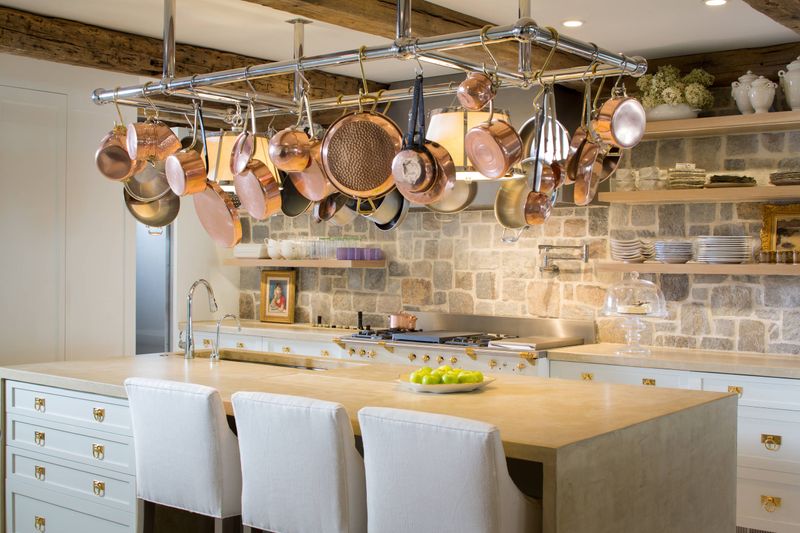
Hanging pots and pans wasn’t just practical – it was a way to showcase quality cookware and keep it within easy reach. The copper and cast iron collections displayed on overhead racks told visitors this was a serious cooking kitchen.
Modern designers are revisiting this functional tradition as an alternative to stuffing pots in drawers. Today’s versions range from rustic wooden ladders to sleek metal frames. Beyond organization, pot racks add vertical interest to kitchens and encourage the use of quality cookware that improves with age.
21. Laundry Chutes
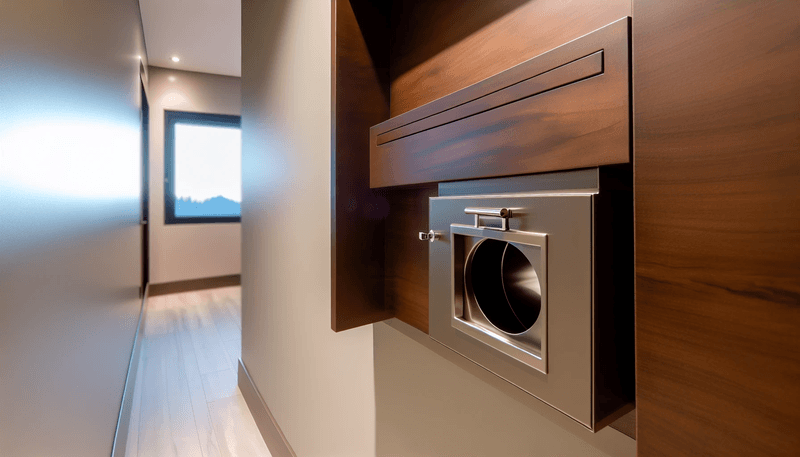
The humble laundry chute was a stroke of genius in multi-story homes. This simple vertical passage allowed dirty clothes to be dropped directly from upstairs bathrooms or hallways straight to the laundry area, often adjacent to the kitchen.
Designers see this feature as worth reviving for modern busy families. No more lugging heavy laundry baskets down stairs or collecting piles from various rooms. While requiring some architectural planning, this practical throwback can be incorporated into new builds or renovations for a truly functional home.
22. Telephone Nooks
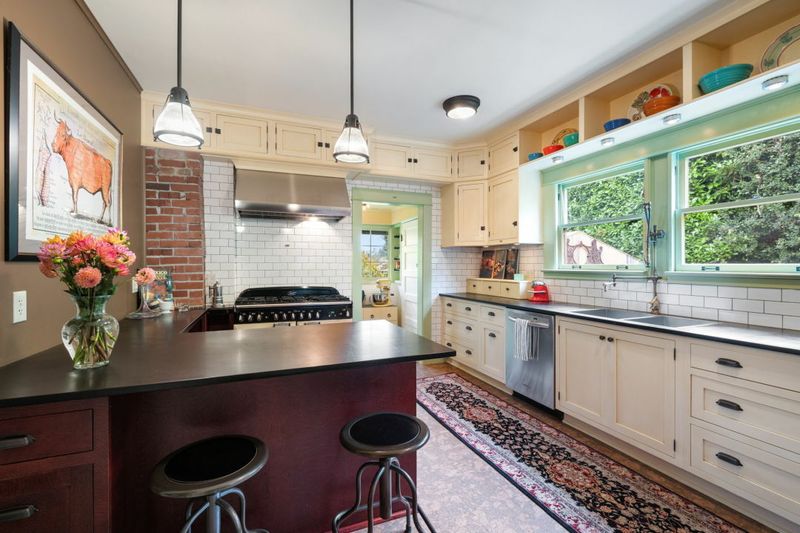
Those charming little alcoves designed specifically for the family telephone were once kitchen staples. Complete with a small shelf for message pads and phone books, these thoughtful spaces acknowledged the kitchen as the home’s communication hub.
While smartphones have replaced landlines, designers see potential in repurposing these nooks for modern needs. Today’s versions can become charging stations for devices, complete with cord management and small shelves. They maintain the original intent—a dedicated space for staying connected – while adapting to current technology.

